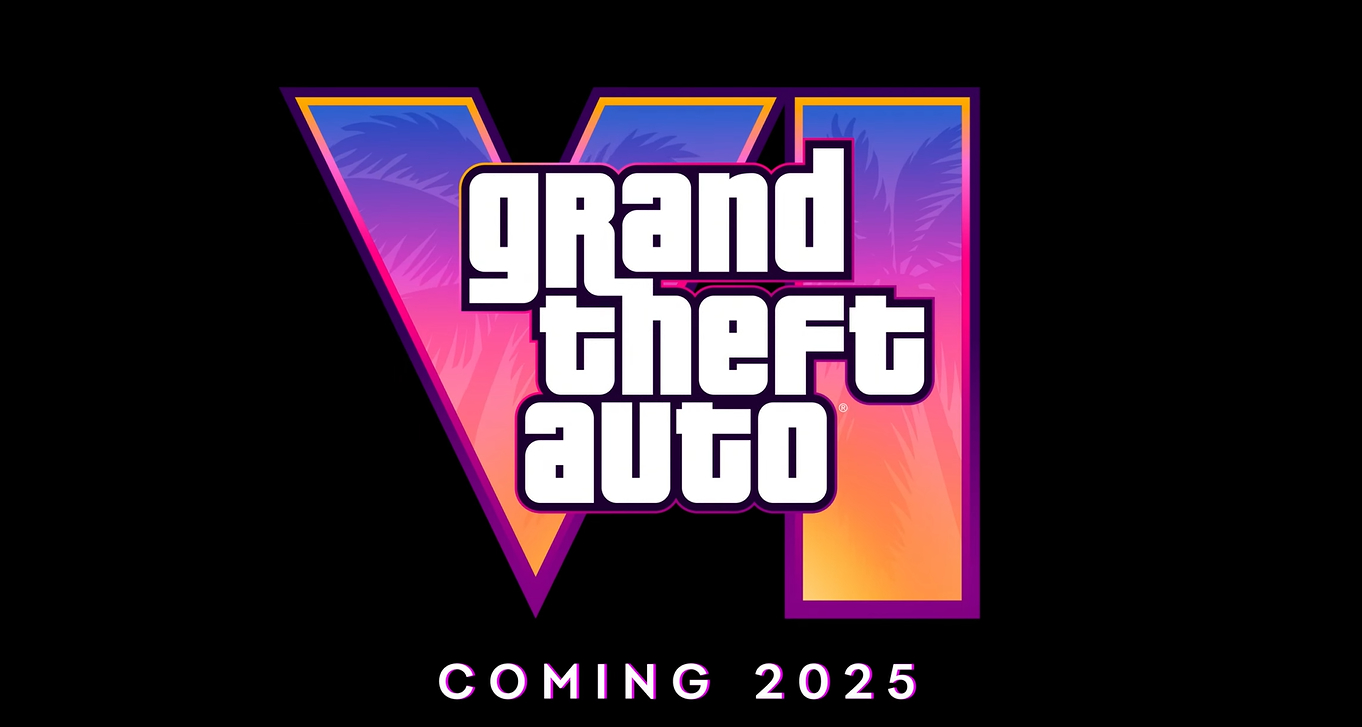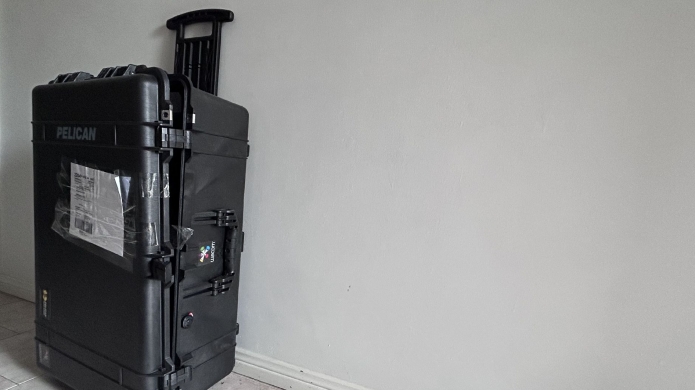Wacom Cintiq Pro 27 Review
Review By Steve Farrelly @ 03:01pm 15/05/23
I love art.
Before I jumped into a career with words, my absolute goal in life was to become a comic book artist. No jokes. Way back when, from the late 80s through the whole of the 90s, my formative years were structured around comic books and art. I would get in trouble in art class at school for drawing things too detailed and too small; “use the whole space for your work, Stephen”, was a phrase all three of my art teachers would say (I did studio art, art and graphic design in my last two years of school. Yep, I was one of those). And back then, the type of art I did and wanted to make a career in was all on paper. Nothing digital at all, except for the colouring, but that seemed like the sort of thing 70s NASA-level room-sized computers were needed for, and who has the budget for that?
I never realised the dream above. At the time I wanted to break into comics (I was told I could if I applied myself by a handful of professionals), it was too hard and too narrow a field. I couldn’t afford to pay for tuition through the Kubert School (the only game in town, and that was in the US), and… well, life was sort of demanding me to pick a lane. So comics went by the wayside and I half ironically found myself becoming a writer, which led me to where I am today.
I won’t ramble on too much longer about sliding doors and the like, but the comic book thing has never left me, and until very recently it was still just a silly pipe dream. Now, however, I’ve looked a bit further ahead and decided to try and give it a shot. Or at least dust off the old skills to see if I still have what it takes. I’m in a comfortable position in life now and as an adult have some of the untouchable budget I didn’t as a teen. And I’ve had this story idea you see; something perfect for the comic book format, and in the wake of the very good Dredge, which has elements of that idea… well, I figured it was time to align with the
So I bought myself an Apple Pencil and ponied up for the Procreate app for my iPad (incidentally how I read 90% of my comics these days). And in sharing this new venture and my intentions in my professional circle it just so happened that a Wacom Cintiq Pro 27 was also available for review. “I do reviews!” I geniusly said to myself, and so I put my hand up not realising what I was about to get myself into.
Armaguard
Full disclosure, outside of the iPad I have never used a tablet for design or art. So if you need a comparative review against other such devices, I actually implore you to look elsewhere. However, if, like me, you’re keen to get into this space with a tablet as a first-timer, I’m hoping my experience is a decent guide. This is still very much a review, but simply coming from the angle of a first-time user.
"It should be noted that this is a heavy unit, coming in at more than 17kg with the stand...”
First up, this unit is a beast and came packaged as such. I actually didn’t know what was being delivered until I saw the Wacom logo on the ultra-sturdy case. And when I opened it… phwoar! It should be noted that this is a heavy unit, coming in at more than 17kg with the stand (more on this in a moment), and is roughly less than half that without (if you want to lay it flat). So a robust desk is definitely needed, and space. Lots of space. Here’s the full specs:
Display Size/ResolutionSo, as you can see, "beast" is genuinely the operative word here. But things get to a finer point once you’re all hooked up, just be prepared to have the space and sturdiness to use this, because it’s as robust as the specs as my words make it sound.Active Area/Size
- 68.3 cm / Ultra HD (3840 x 2160 or 4K)
Weight/Aspect Ratio/Brightness
- 596 x 335 mm / 638 x 379 x 31 mm
Colour Performance
- 7.2 kg (without any stand, pen tray or other bezel attachments) / 16:9 / 400 cd/m2 (typ)
Multi-Touch
- 1.07 billion colors (10 bit), 99% Adobe RGB (CIE1931)(typ), 98% DCI-P3, HDR PQ / HLG Gamma support, PantoneTM Validated, Pantone SkinToneTM Validated
OS Requirements
- Physical on/off switch for multi-touch; ExpressKeys™, 3 pen side switches, and time-saving on screen shortcuts including Radial menus, Grid panels, and pen gestures
- Windows 10 or later, macOS 10.15 or later; USB-C port with DisplayPort Alternate Mode or DisplayPort or HDMI and USB-A; internet access to download driver
A Fine Touch
While thoughts of a military tank or bank vault might come to mind when reading the above, it’s important to let you know that once you’re all set up, the Cintiq Pro 27 is surgery-precision levels of touch and finesse. The Stylus, or Pen, is simply a stunning device to use, and in playing around with it in Photoshop out of the box I was amazed at how natural it all felt. Having been given the review unit with its weighty stand, I set my workspace up on a roughly 45-degree angle and set myself to drawing. I won’t share any of the comic book stuff yet (for copyright reasons), but as you can see in the above image, I pulled off a Birdhouse deck design-inspired first attempt at use and couldn’t be more pleased with how it came out.
Having a button on the stylus to erase anything on the canvas just made the process feel infinitely more streamlined and creative. And while we are dealing with digital art, I don’t think I can go back to pencil and paper anytime soon. In short, just at a rudimentary level, this is how I intend to create into the future.
"It’s an all-purpose extension, really, and definitely the right device should you be investing wholly into a future of any sort of artistic or professional design...”
The Wacom Cintiq Pro 27 doesn’t come with its own OS or anything, acting more or less as a second screen from another device either by mini DisplayPort, USB-A, USB-C or HDMI. I used the latter with a 2021 Dell G15 running Windows 10 (no room on my main desk to connect it to my beastly PC), and had zero issues with that setup. And you can, of course, run essentially any design suite for use with it, from Procreate to Adobe to Wondershare and beyond. Some professionals use the device for video editing and others for game creation. It’s an all-purpose extension, really, and definitely the right device should you be investing wholly into a future of any sort of artistic or professional design. But you also need to be prepared to spend for that future, because this unit is not cheap coming in at a whopping $5499 Dollarydoos without the stand (that’ll set you back a further AUD$799), but what you’re getting with such an investment is a heavy-duty 4K template for your canvas of choice, and on that front I couldn’t recommend it more highly.
The Pen is Mightier than the Mouse
What makes the Cintiq Pro 27’s shelf-life so appealing is its stylus -- the Pro Pen 3 (you can use other Wacom pens, FYI). This is an unpowered pen with heaps of customisation in terms of weighting (front, centre or back), nib size and grip. This feeds directly into the idea of Wacom being a fairly open platform for creators and not so regimented, *cough* Apple *cough*, and is also one of the reasons I’m all in on the device. You can also set the pen’s cradle on whichever side of the tablet you want due to a fairly modular setup. So if you’re one of those weird ‘lefties’, you’re not left out in the cold here.
"This is good because when you have an 11-year-old who thinks he’s the next Mike Mignola and tries to toy with your own work work, you might not lose all that hard work you just put into a panel.*Ahem*...”
Use of the pen is not quite 1:1, but it’s damn close to the point of not really noticing after a while (and in fact I’d argue it helps with realisation or erroneous lines and such). You can also program its buttons, and these will only work when you’re in close contact with the screen. This is good because when you have an 11-year-old who thinks he’s the next Mike Mignola and tries to toy with your own work work, you might not lose all that hard work you just put into a panel.*Ahem*. Bottom line, the more you use the pen on your ‘second screen’ the more quickly you might move on from a mouse at all lest you’re gaming, it’s that fun, addictive and good.
Also, in speaking of the device being wholly modular, swapping out nibs, grips and weight with the pen is really easy. As well as any of the additional platforms for the whole panel (these are to house reference art or the like), though it has a handful of buttons on the body that kind of don’t make sense, design-wise. I’ve shared the size and weight of everything, but it has hand-grips, like a Switch, with trigger buttons and more (all customisable), but I haven’t used them and they just feel a bit superfluous. But as stated much earlier, this is my first tablet so I suspect they’re positioned as they are for users demanding them, and they don’t bother me, they just baffle me.
Comic Works
As I transition (or expand, really) into the next phase of my creative journey, I’ll be doing it with a Wacom setup, for sure. As stated, I’m new to this world, but why not start driving in a Ferrari if you can learn in that. At least you’ll have the top-end of performance to learn from and build backwards from. Drawing with this device has been a dream, and I even enjoy navigating with the pen as a mouse-like device on that screen. I need to rejig my setup and even just ordered a new L-shaped desk to have it as part of my overall workspace, so there’s a few things to consider before you dive in, such as space, the device’s weight and, of course, its cost. But with a 4K screen and a near-seamless stylus-to-screen experience and with use of almost any creative app, it’s hard not to recommend the Cintiq Pro 27.
Now, time to get back to my comic book idea. People like sharks, right? Oh, hold up… shhhhhhhh. You didn’t hear anything.
|
What we liked
The Pro Pen 3 is a dream to use
The 27" screen is a massive canvas to work on
4K resolution
Plug-and-play
The addition of the adjustable stand is great -- if you can afford to add it
Modular elements allow you to set up your workspace how you see fit
|
What we didn't like
You need a big and sturdy workspace
It's heavy
Some of the button placements don't initially make sense
|
We gave it:
9.5
OUT OF 10
|
Latest Comments
























